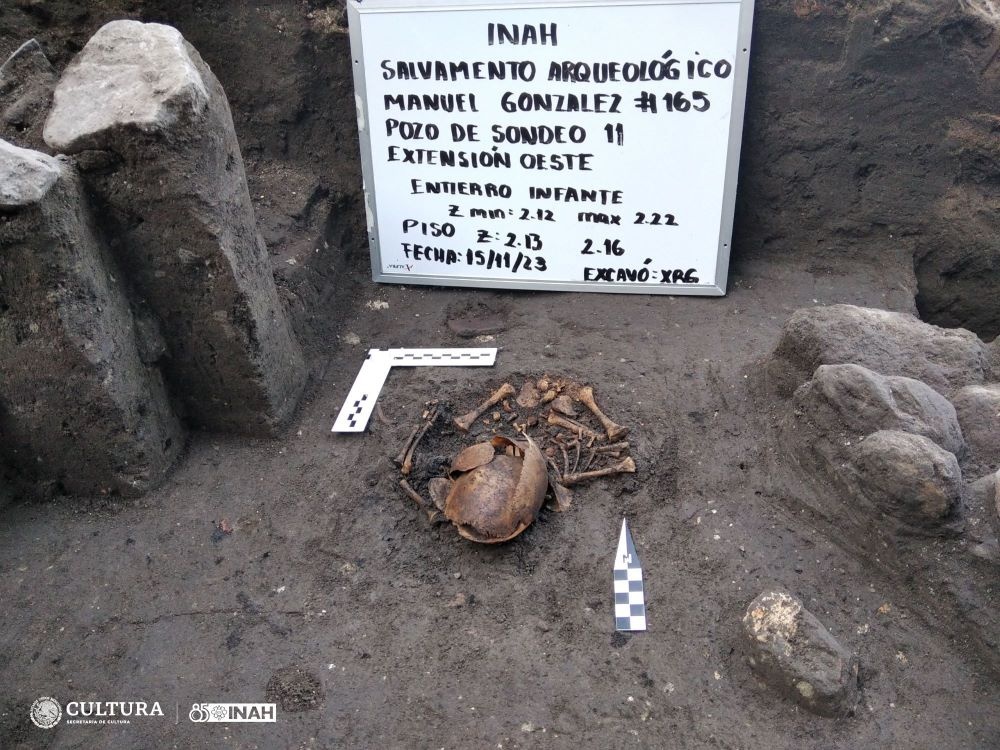The National Institute of Anthropology and History (INAH) reported that, after the discovery of a network of canals and a pre-Hispanic pier in the Tlatelolco area, it can be confirmed with certainty that this area had an important lake environment.
The discovery after excavating a piece of land located in a housing complex on Eje 2 Norte Manuel González corner with Lerdo de Tejada Street, in the San Simón Tolnáhuac neighborhood, in the country’s capital.
This confirmed that it coincided with the location of the old neighborhoods of Iztatlán or Tlaxoxiuhco, located north of the then Mexico-Tenochtitlán, INAH reported in a statement, in which it added that it has been investigating that area since September 2023.
Consisting of 19 neighborhoods, the ancient city had a complex hydraulic structure, as revealed by this discovery, which was later modified at the beginning of the New Spain period.
The property, of approximately 11 thousand square meters, has allowed the group of specialists to recognize a part of the northern border of Tlatelolca that, according to historical sources, would coincide with the Iztatlán or Tlaxoxiuhco neighborhoods.
Through 40 boreholes, traces of different occupations are observed: between 1987 and 1993, the “La Polar” oil factory operated, and a previous one that marks the establishment of “Leviatán y Flor”, founded in 1912, by the businessmen Isaac Leviatán and Jacobo Flor, European migrants who dedicated themselves to producing yeast for bakeries.
In addition, railway sleepers, footings and drainage pipes were located from the modern era, followed by sterile layers that indicate the inactivity of the soil for a long period, until reaching those corresponding to the Late Postclassic period (1200-1521 AD). .
The archaeologist to descend to the body of water; In the second occupation, from the first decades of the viceroyalty, there are walls added with irregular stones to turn it into a possible reservoir for the liquid.”
Unlike what happened in Tenochtitlan, he added, Tlatelolco remained occupied by the indigenous population, and there was no immediate change in their way of life, as demonstrated by the discovery of the burial of a neonate in the pre-Hispanic style, in a seated position and associated with a housing structure, already in the period after Spanish contact.
However, the floods of 1555 and 1607, epidemics and other adversities would lead to a decrease in the native population, so that the periphery of the city was gradually depopulated towards the 17th and 18th centuries, as maps of the time show where they appear as plains.
#INAH #confirms #discovery #important #lake #environment #Tlatelolco
– 2024-04-07 14:40:05
